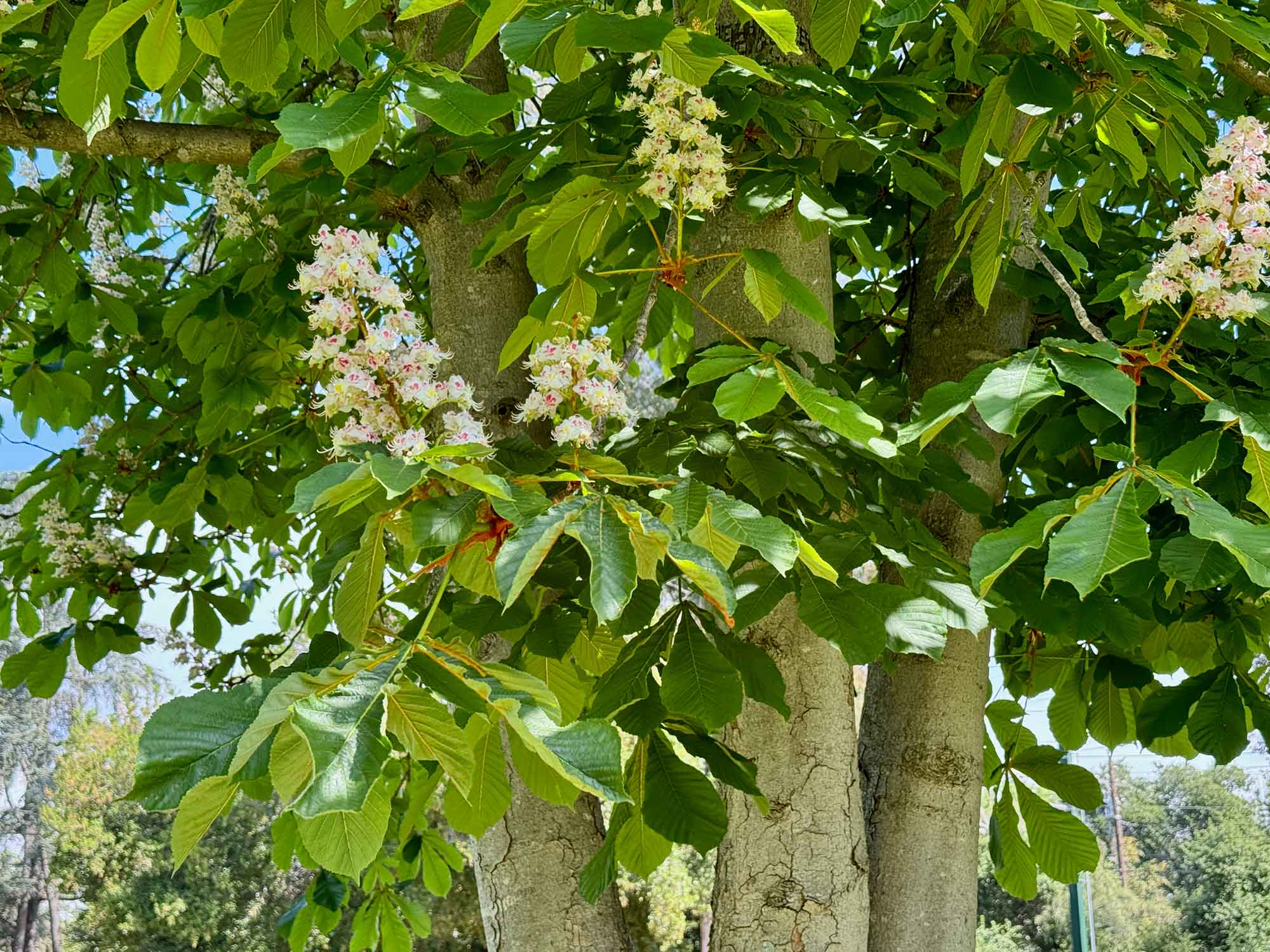Aesculus hippocastanum
 horse-chestnut
horse-chestnut
Distinguished by its large palmate leaves with seven fingers that fatten toward the tips, the horse-chestnut bears masses of ¾ inch flowers in upright spikes about 8 inches high. They are among the most beautiful of tree flowers and are favored by bees. The petals are white, blotched with red at the base.
Native to Northern Greece and Albania, the tree must have been favored for shade, ornament, and fodder. The prickly green fruit contains a shiny chestnut-colored nut, up to 2 inches across, which small children like to feel. In England, the game of conkers is played by threading the nut on a string and swinging it at your opponent’s nut. A record is kept of all the nuts that your nut has broken and a victorious conker can achieve very large scores because all the previous triumphs of a vanquished conker pass to its credit. Packages of horse-chestnuts with an instruction card entitled “Don’t go bonkers, Play conkers,” proved to be exportable to South Africa.
A. hippocastanum is now unknown on campus. An unusual grafted tree, now removed, at 1017 Vernier Place had this species on the right and A. × carnea on the left (street view from 2008). See a pair of horse-chestnuts in Palo Alto at the east end of Peers Park and on the right at 560 Chaucer Street.
Standard chestnuts, Castanea, also have a prickly exterior but there are generally two (sometimes three) nuts enclosed, which, as a result, have a flat side.
Name derivation: Aesculus – the Latin name for a kind of oak bearing edible acorns but applied by Linnaeus to this genus; hippocastanum – the Latin name for common horse-chestnut. From California Plant Names.
About this Entry: The main text of this entry is from the book Trees of Stanford and Environs, by Ronald Bracewell, published 2005. Family updated from Hippocastanaceae to Sapindaceae (Oct 2017, SP). Locations updated, Palo Alto locations added (Apr 2024, SP).




